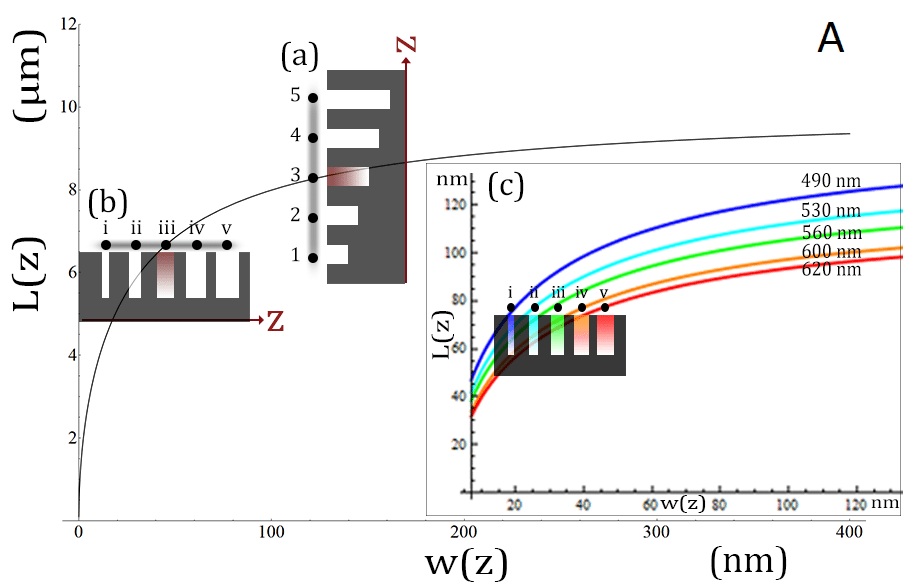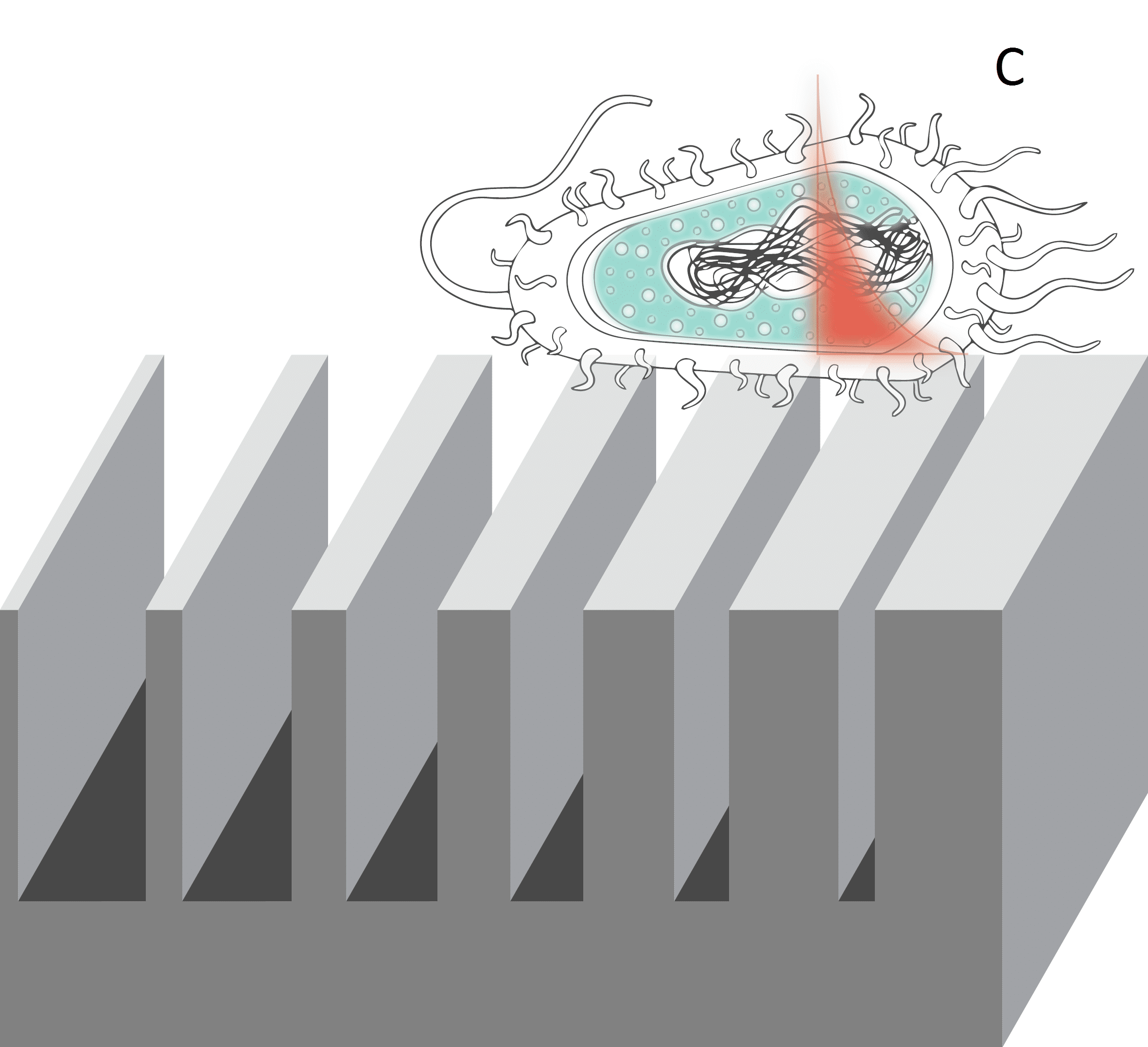
Plasmonic Graded Gratings for Hyperspectral Near-field Infrared Sensing and Imaging
Patterning a metal-dielectric surface with properly arranged subwavelength features provides the means for light to excite surface plasmon polaritons (SPPs) [1]. However, these creases, or other indentations of the surface can become more than just a means for SPP excitation. Indeed, these features could become resonant cavities, waveguides, or a combination thereof, extending in one, two or three dimensions. They can be functionally graded through spatial tapering of their pertinent geometrical parameters. (See Fig. 1 (a)) E.g. these subwavelength grooves can act as resonant waveguides with no cut-off for certain cavity modes and polarizations [2]. As a result, even in the spectral ranges where SPPs do not form on flat metallo-dielectric boundaries (λ > mid-IR), these subwavelength features can give rise to SPP-like behavior, known as “spoof SPPs” [3].
One aspect of these subwavelength grooves (See Fig. 1 (b) or (c)), is that when the groove-width is comparable to the evanescent tail of the SPP, it can result in SPP-coupling. The narrower the groove becomes, the stronger this coupling. We show that a far more practical approach is to use this property alone to create frequency selective surfaces without changing the groove-depth.



Fig. 1: (a.) Illustrates the emergent “rainbow-trapping” on a system of weakly-coupled grooves each housing strongly-coupled SPPs (b.) The E-field simulation of a graded-grating trapping localized infrared wavelength at λ = 6 µm (c.) An application example: utilizing this substrate as a platform for low-phototoxicity infrared spectroscopy in biological tissue.
This approach is a powerful tool for facile design of hyperspectral surfaces without the need for full wave simulation.
References:
[1] J. B. Pendry, et al., Science, vol. 305, no. 5685, pp. 847–848 (2004).
[2] J. Le Perchec, et al., Physical Review Letters 100, (2008).
[3] A.O. Montazeri, M. Fang, P. Sarrafi, and N.P. Kherani, arXiv 1406.3083v2 (2015)
arthur.montazeri@berkeley.edu
Powered by Eventact EMS